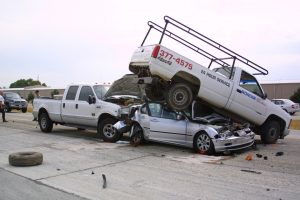 Millions of workers drive or ride in a motor vehicle as part of their jobs. And, motor vehicle crashes are the leading cause of work-related deaths in the U.S. The type of company or job doesn’t matter — the risk is there.
Millions of workers drive or ride in a motor vehicle as part of their jobs. And, motor vehicle crashes are the leading cause of work-related deaths in the U.S. The type of company or job doesn’t matter — the risk is there.
Category: Safety on the Road
Fleet Safety is Good Business
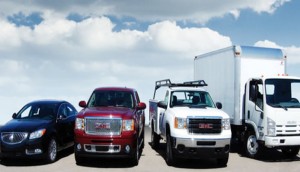 There is a clear link between a well-managed vehicle fleet and profitability. With more than 90 percent of crashes caused by human error (per the National Safety Council or NSC) creating a Fleet Safety plan will help your bottom line! A documented Fleet Safety plan pays off in multiple fashions – tangible benefits are a reduction of vehicle maintenance, downtime, and increased fuel efficiency. Intangible advantages could be increase in employee satisfaction, owner’s peace of mind with a documented process to follow.
There is a clear link between a well-managed vehicle fleet and profitability. With more than 90 percent of crashes caused by human error (per the National Safety Council or NSC) creating a Fleet Safety plan will help your bottom line! A documented Fleet Safety plan pays off in multiple fashions – tangible benefits are a reduction of vehicle maintenance, downtime, and increased fuel efficiency. Intangible advantages could be increase in employee satisfaction, owner’s peace of mind with a documented process to follow.
Tips For Driving in the Fog
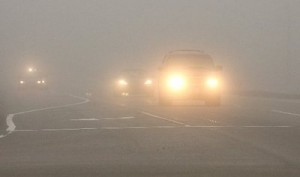 Driving in fog is dangerous because visibility is reduced. To keep safe, follow these five tips for driving in fog:
Driving in fog is dangerous because visibility is reduced. To keep safe, follow these five tips for driving in fog:
1. Slow down.
If you cannot see where you are going, do not drive fast. Use your speedometer as a guide to regulate your speed, because thick fog masks the sensation of speed by removing visual indicators of velocity.
2. Use low-beam headlights.
When visibility is restricted, a driver’s natural tendency is to activate the high-beam headlights. When driving in fog, this further impairs visibility because the high-beam illumination reflects off of the fog and back at your vehicle.
3. Use fog lights.
If your vehicle has front fog lights, they can help illuminate the road and make your vehicle more visible to other drivers. Some vehicles have rear fog lights, which help motorists who are following you to see your vehicle from a greater distance.
4. Use the right-side pavement line as a guide.
In thick fog, use the white line painted on the right side of the road as a guide. Do not use the center pavement markings, because doing so will guide you to move closer to oncoming vehicles, which are also driven by people having trouble seeing where they are going.
5. Do not stop on the road.
When you cannot see where you are going, a natural reaction is to slow down or even stop. In fog, never stop on the road. Find a safe place to pull over that is as far away from traffic as possible and turn off your lights. Leaving your lights on may cause motorists to think that your taillights indicate the lane of travel, which could cause a collision.
Passenger Without Seatbelt a Risk to Others in the Car
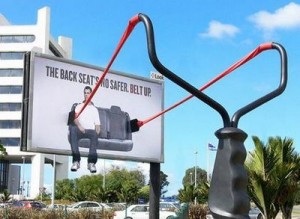 In a study, published in the Jan. 21 issue of The Journal of the American Medical Association, researchers looked at the association between the death of a car occupant and the use of restraints, either a seat belt or child car set, of another occupant in the same car based on fatal accident data from the National Highway Traffic Safety Administration.
In a study, published in the Jan. 21 issue of The Journal of the American Medical Association, researchers looked at the association between the death of a car occupant and the use of restraints, either a seat belt or child car set, of another occupant in the same car based on fatal accident data from the National Highway Traffic Safety Administration.
The found the risk of death was higher for the other occupants of the car if someone else was unrestrained, no matter where they were sitting. For example:
- For someone in the front seat wearing a seatbelt, the risk of death rose by 20% if someone behind them was unrestrained.
- For a restrained passenger in the rear seat, the risk of death increased by 22% if someone in front of them was unrestrained.
- For someone with a seatbelt on one side of the car, the risk of death rose by 15% if someone in the same seat row was unrestrained.
Based on those findings, researchers say that use of a seatbelt among rear-seat occupants could prevent about one in six deaths of front-seat passengers caused by car crashes.
Seat Belts: Why You Should Use Them
Staying Alive After an Auto Accident
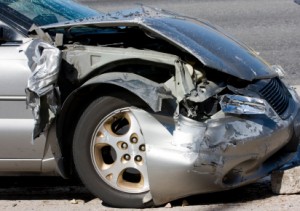 If your car will move, get it out of the flow of traffic and as far from traffic on the shoulder as possible. Turn on your flashers and stay inside the vehicle.
If your car will move, get it out of the flow of traffic and as far from traffic on the shoulder as possible. Turn on your flashers and stay inside the vehicle.- Keep your seatbelt on in case your vehicle is struck.
- Call 911. Get the other driver to pull off to a safe place so you can exchange information when help arrives.
- If you smell gas, get out. There could be a leak and risk of fuel-fed fire. If you have the engine running to stay warm in extremely frigid temperatures, be aware that the accident may have caused an exhaust leak putting you at risk for carbon monoxide poisoning, and you may not smell the exhaust coming in.
- If you must wait outside the vehicle, because you cannot get it out of traffic or you smell gas, get as far from the road as possible. Never stand behind or in front of the vehicle.
via 5 Tips for Staying Alive After an Auto Accident – AccidentAttorneys.org.
The Dangers of Texting While Driving
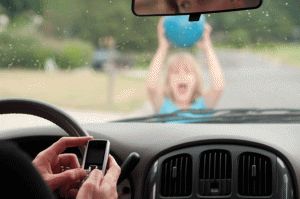 The popularity of mobile devices has had some unintended and even dangerous consequences. We now know that mobile communications are linked to a significant increase in distracted driving, resulting in injury and loss of life.
The popularity of mobile devices has had some unintended and even dangerous consequences. We now know that mobile communications are linked to a significant increase in distracted driving, resulting in injury and loss of life.
The National Highway Traffic Safety Administration reported that in 2012 driver distraction was the cause of 18 percent of all fatal crashes – with 3,328 people killed – and crashes resulting in an injury – with 421,000 people wounded.
Forty percent of all American teens say they have been in a car when the driver used a cell phone in a way that put people in danger, according to a Pew survey.
The Virginia Tech Transportation Institute found that text messaging creates a crash risk 23 times worse than driving while not distracted.
Eleven percent of drivers aged 18 to 20 who were involved in an automobile accident and survived admitted they were sending or receiving texts when they crashed.
Distracted driving endangers life and property and the current levels of injury and loss are unacceptable.
Texting and Driving Prevention.
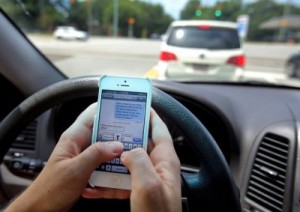 Fact # 1 – Five seconds is the average time your eyes are off the road while texting. When traveling at 55mph, that’s enough time to cover the length of a football field.
Fact # 1 – Five seconds is the average time your eyes are off the road while texting. When traveling at 55mph, that’s enough time to cover the length of a football field.
Fact # 2 – Reaching for a phone, dialing, texting and other uses of portable devices increased the risk of getting into a crash by three times.
Fact # 3 – 11% of all drivers under 20 involved in fatal crashes were reported as distracted. This age group has the largest proportion of drivers who were distracted.
The Human Cost of Motor Vehicle Accidents
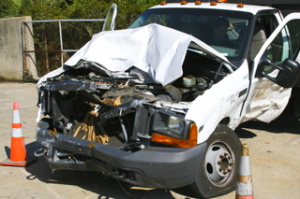 Drivers take a lot of risks on our roads today – with people speeding, driving impaired, massive traffic congestion and the prevalent use of mobile phones all has led to a high probability of accidents.
Drivers take a lot of risks on our roads today – with people speeding, driving impaired, massive traffic congestion and the prevalent use of mobile phones all has led to a high probability of accidents.
Employees injured in a motor vehicle accident can have a negative boomerang effect to a company by incurring costs such as lost production, workers compensation, replacement costs such as new staff and equipment, insurance premiums/increases and a potential burden of civil lawsuits. But the huge financial burden and human cost of road crashes goes far beyond your workplace. In 2013 the National Safety Council documented the estimated cost of motor vehicle deaths was $267.5 billion.
Winter Driving Safety
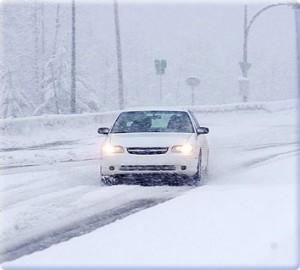 If you find yourself driving in the snow, stay alert, slow down and stay in control. These are the three key elements to safe driving in the snow.
If you find yourself driving in the snow, stay alert, slow down and stay in control. These are the three key elements to safe driving in the snow.
Here are a few other tips for driving in the snow:
- If you think you may be heading into snow or there is a possibility of driving in the snow, make sure you do a maintenance check on your vehicle before making the trip. Check the vehicle battery, belts and hoses, anti-freeze, oil, lights, brakes, heater and defroster and check the exhaust system for leaks which may allow carbon monoxide to enter the vehicle.
- Plan your route ahead of time and give yourself extra travel time. Make sure someone knows your travel plans.
- Wear comfortable clothing that does not restrict your movement while at the wheel. Keep warm clothing available for when you exit the vehicle.
- Always clear any snow and ice from all windows, lights, mirrors and the roof before driving. After starting the vehicle wait for the interior windows to clear of fog so you will have appropriate visibility.
- Make sure there is sufficient windshield washer fluid in the vehicle reservoir and that it is rated for freezing temperatures.
- It takes longer to stop on slippery surfaces, so add additional time to the three-second rule.
- Know the proper handling procedures for a skidding vehicle.
- Slow down in snow and icy conditions, make turns slowly, and make all starts slow and smooth.
- Remember that bridges and overpasses may freeze before the regular travel lanes of a roadway. Watch out for black ice, areas of the roadway that appear black and shiny and where your vehicle can suddenly lose traction. Slow down in these areas and keep your foot off the brakes.
- If you get stuck or stranded, don’t panic. Stay with your vehicle for safety and warmth. Wait for help to arrive. If you have a cell phone and are in an area with cell phone service, try calling for help. Try to always know your exact locations while driving.
- Keep your clothing dry. Wet clothing can lead to dangerous loss of body heat.

